АО "UNIFIED PENSION SAVINGS TRUST"
Fully funded pension system in Kazakhstan was introduced in 1998 on the basis of the Chilean model. This is a system with individual pension accounts, to which compulsory contributions of a specified amount are transferred, which are subsequently invested in various financial instruments in order to maintain and increase the value of savings. Investment income is distributed to individual accounts on a daily basis.
АО "UNIFIED PENSION SAVINGS TRUST"
Fully funded pension system of the Republic of Kazakhstan consists of the following participants:
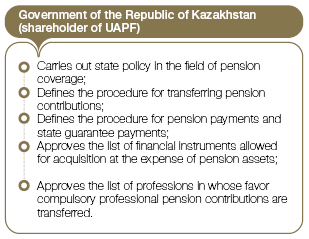
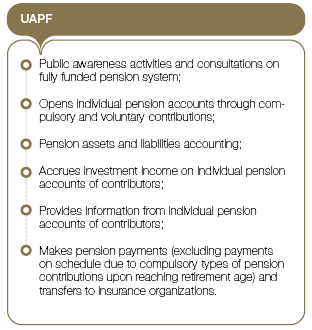
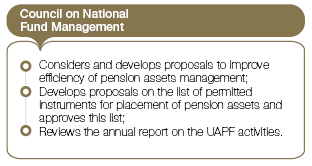
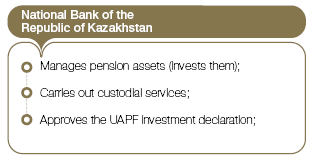
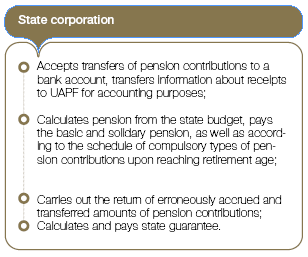
Kazakhstan has a unique model of state guarantee (Article 5 of the Law “On Pension Coverage in the Republic of Kazakhstan”) of compulsory types of pension contributions in the amount actually paid to the individual pension account adjusted to inflation at the time of eligibility to pension payments (i.e. achievement of the retirement age established by legislation, departure for permanent residence outside the Republic of Kazakhstan or permanent disability of I and II groups). In other words, when a person retires, the profitability accumulated on an individual pension account is calculated in relation to the level of accumulated inflation for the entire period spent in the accumulated pension system. If the profitability is lower than inflation, the state pays this difference to the recipient at the expense of the republican budget in a one-time payment. If the profitability is equal to or higher than inflation, then the state guarantee is not paid.
Interaction scheme of all participants in the fully funded pension system of the Republic of Kazakhstan is as follows (an example of formation of pension savings through compulsory pension contributions):
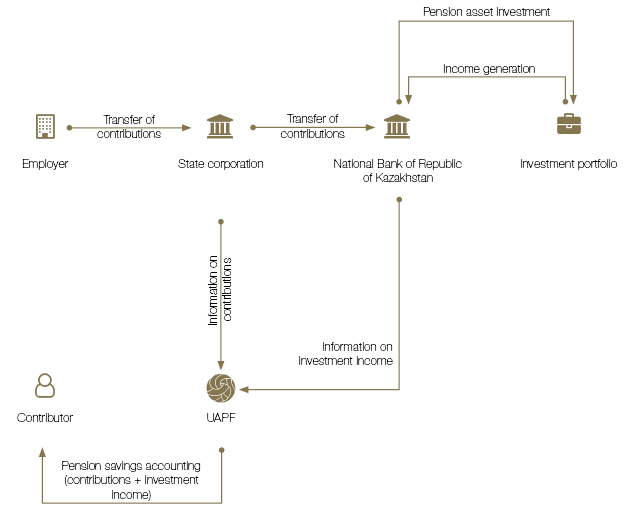
АО "UNIFIED PENSION SAVINGS TRUST"
UAPF is a reliable single administrator and operator of all financial and information flows of the fully funded pension system of the Republic of Kazakhstan, the founder and shareholder of which is the Government of Kazakhstan represented by the State Institution “Committee of State Property and Privatization” of the Ministry of Finance of the Republic of Kazakhstan. The Fund’s own assets are under trust management of the National Bank.
MISSION: Organizational assistance to contributors in the formation of pension savings by improving the quality of services, reliable accounting of pension assets, as well as improving the planning pension savings culture.
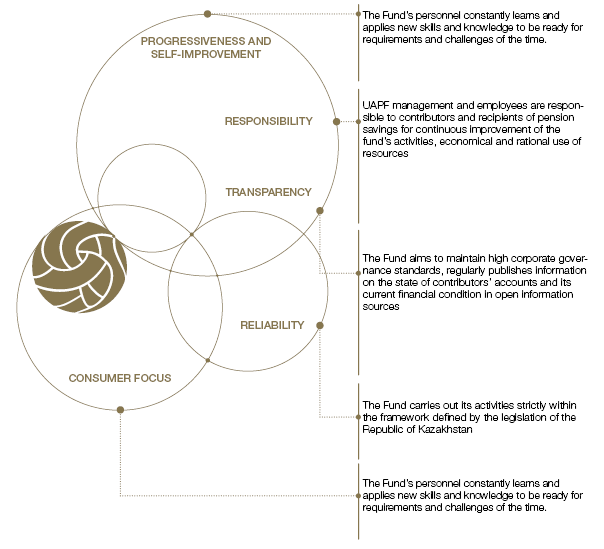
АО "UNIFIED PENSION SAVINGS TRUST"
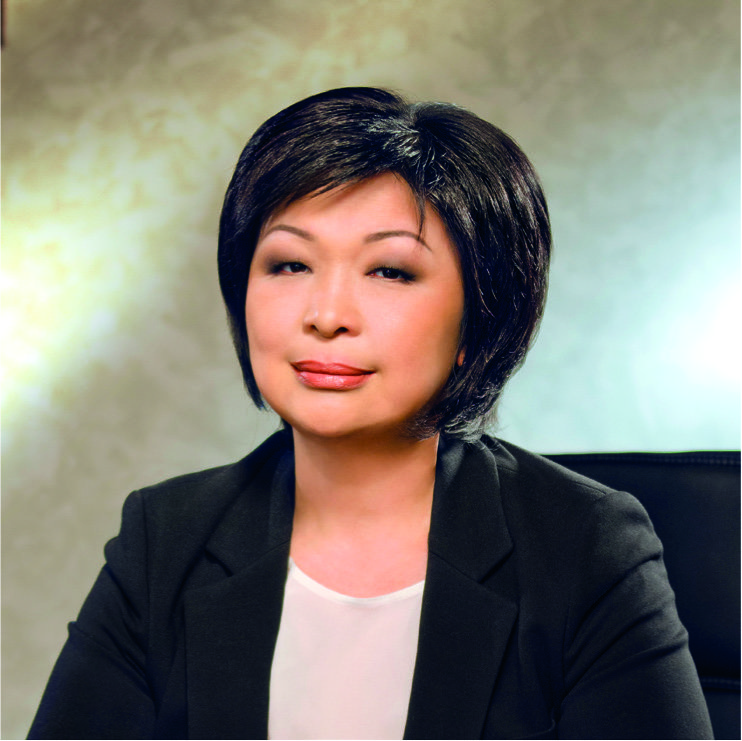
Galiyeva Dina
Chairperson of the Supervisory Board of UAPF JSC – Deputy Governor of the National Bank of the Republic of Kazakhstan
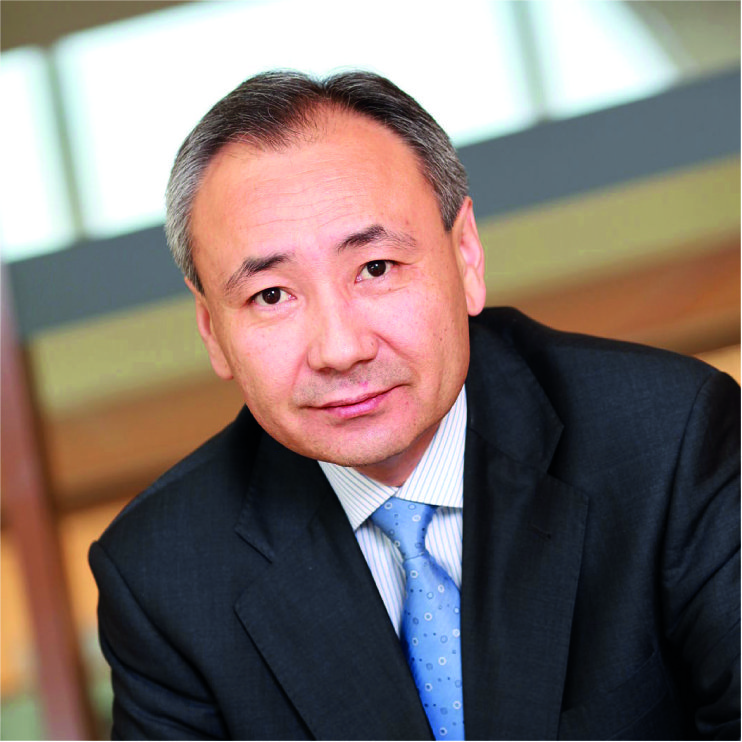
Damitov Kadyrzhan
Member of the Supervisory Board of UAPF JSC Independent Director
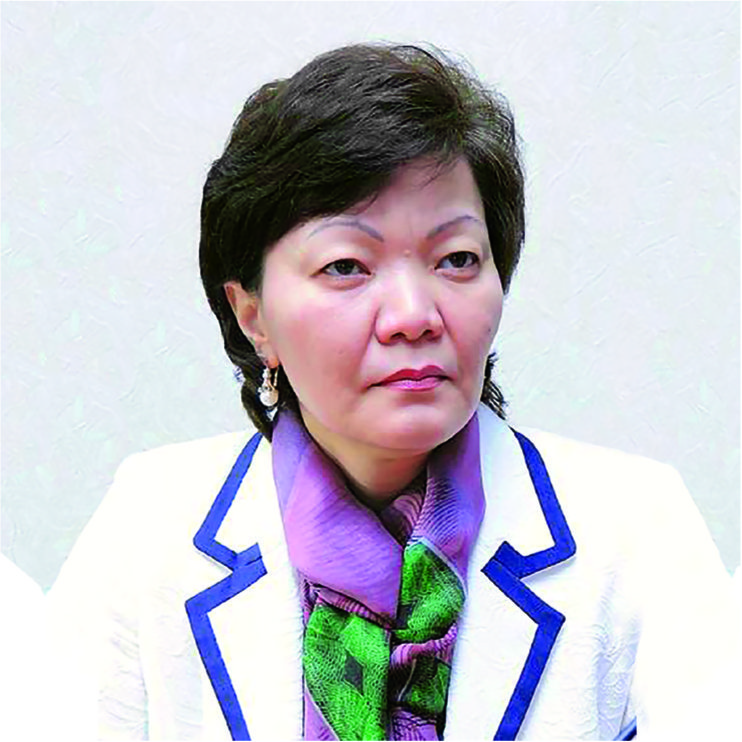
Zhakupova Svetlana
Member of the Supervisory Board of UAPF JSC – Deputy Minister of Labor and Social Security of the Republic of Kazakhstan
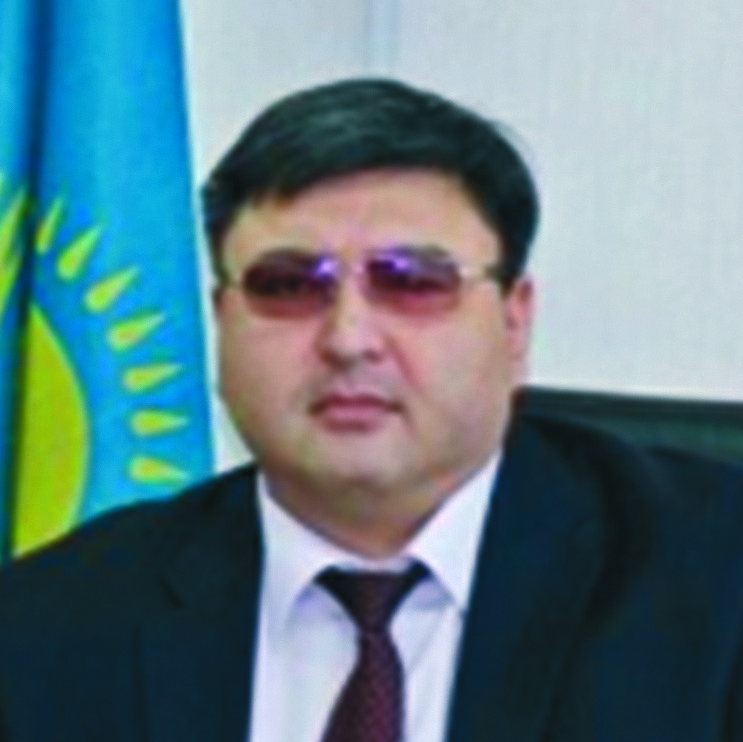
Tashenov Bakytbek
Member of the Supervisory Board of UAPF JSC – Chairman of the Committee for the State Property and Privatization under the Ministry of Finance of the Republic of Kazakhstan
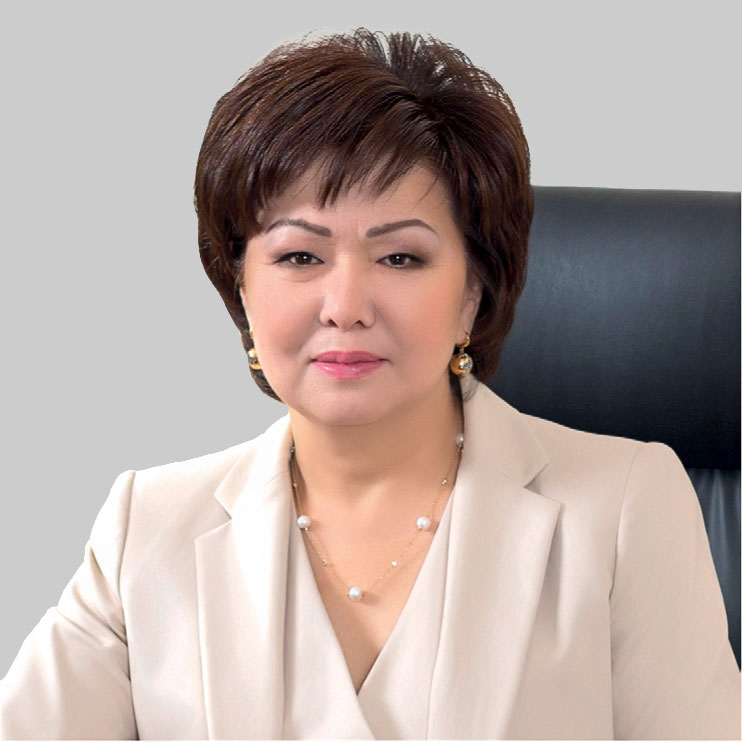
Nauryzbayeva Nurbubi
Chairperson of the Executive Board of UAPF JSC
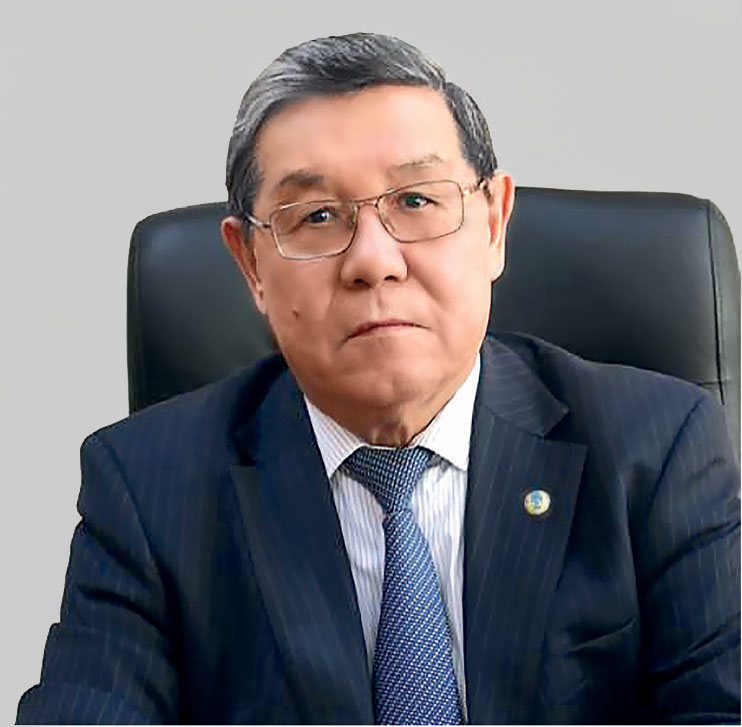
Tadjiyakov Bisengali
Independent Director
Members of the Supervisory Board for 01.01.2019

Nauryzbayeva Nurbubi
General management and control over the Fund’s operations for all the issues outside the exclusive competence of the Sole Shareholder nor the Supervisory Board of the Fund
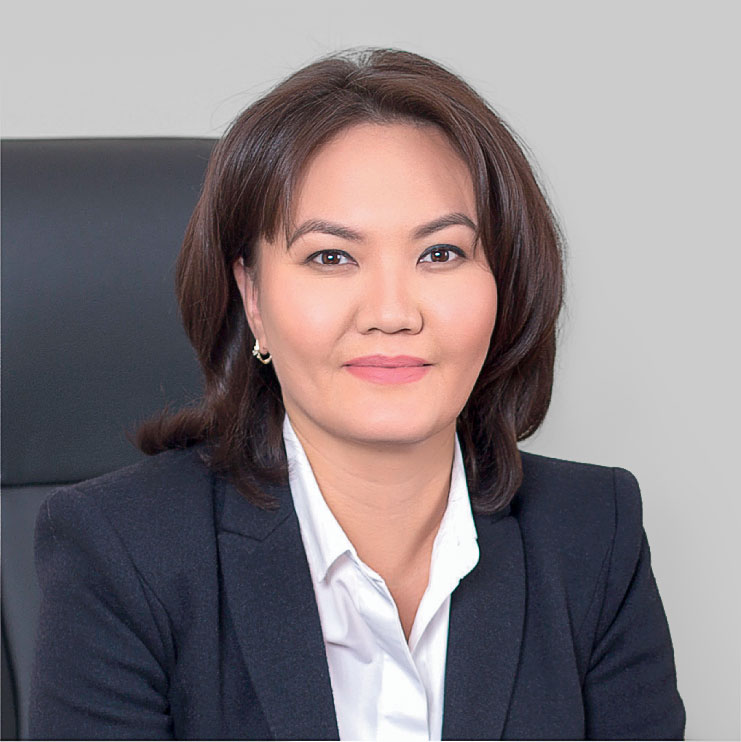
Yegeubayeva Saule
General management, coordination and control over strategical analysis, actuarial calculations, risk management systems, investment portfolio analysis, regional network support and development, public and Government relations, communications with other stakeholders
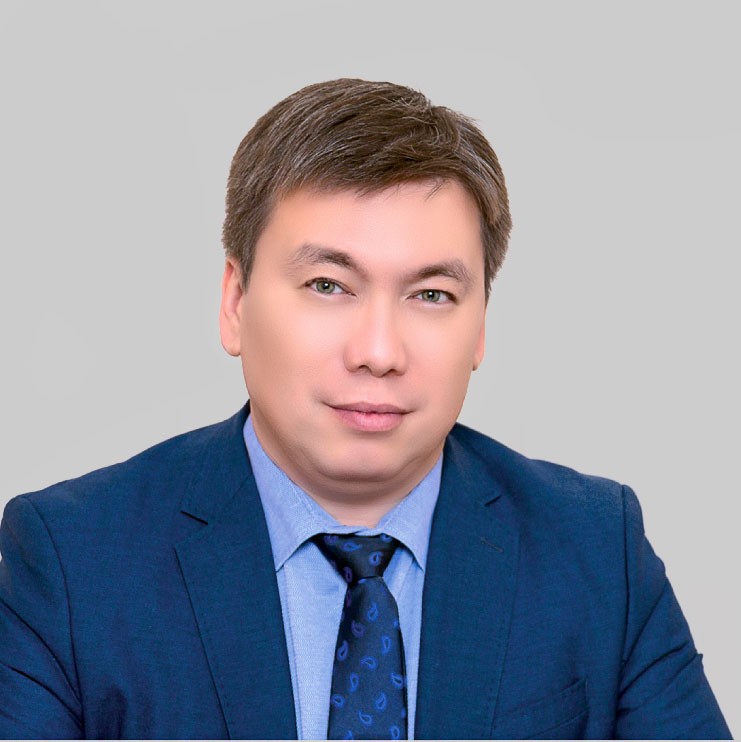
Mukhamedzhanov Baurzhan
General management, coordination and control over IT, improvement of pension services and quality management, document and archives management, Government relations, communications with other stakeholders
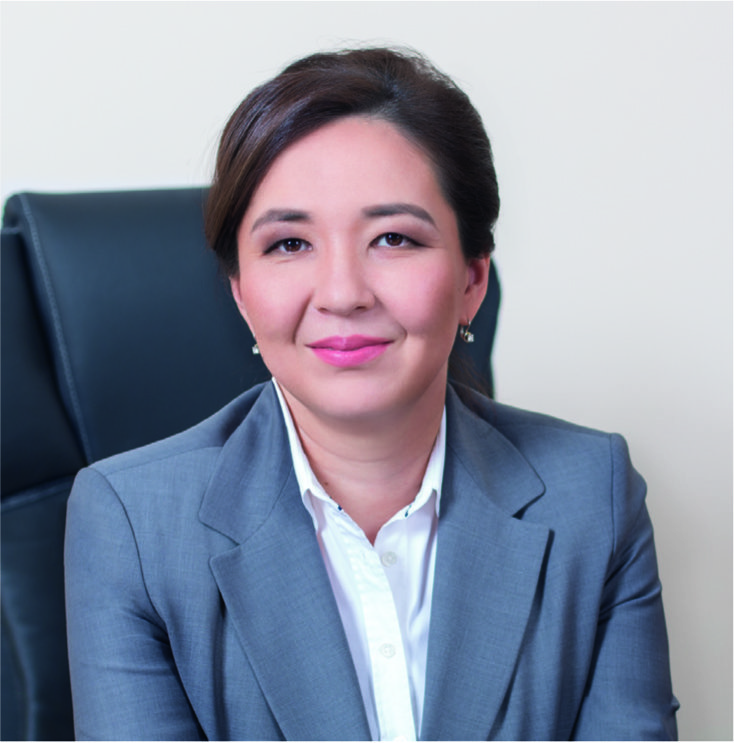
Tulegenova Zhanara
General management and coordination of remote consulting, individual pension savings accounts statements distribution, accounting and financial reporting on pension assets, record keeping and control over operations on custody account, pension savings distributions and transfers to annuities, members database, Government relations, communications with second-tire banks and other stakeholders
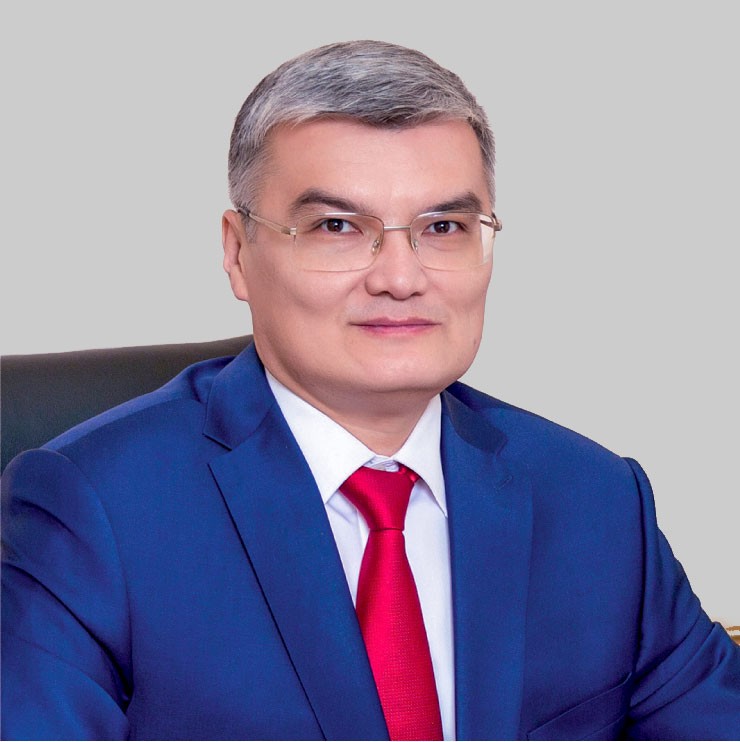
Utegulov Maulen
General management, coordination and control over legal support of the Fund’s operations, default assets management, procurement, budget planning and control, maintenance and supply, analysis of the Fund’s operations
Members of the Executive Board for 01.01.2019 г.
Information on the activities of the Board of Directors
During 2018, the Fund’s Board of Directors held 20 meetings (8 in presentia and 12 in absentia). During the reporting period, members of the Board of Directors duly attended meetings and actively participated in its work. In particular, participation in meetings in person and in absentee voting is as follows:
- Galiyeva Dina (100%, 100%);
- Nauryzbayeva Nurbubi (87.5%, 91.6%);
- Damitov Kadyrzhan (100%, 100%);
- Tadzhiyakov Bisengali (100%, 100%);
- Zhakupova Svetlana (87.5%, 75%);
- Kadyukov Nikolay (85.7%, 72.7%);
- Tashenev Bakytbek (100%, 0%).
During 2018, the Board of Directors considered 88 issues related to its competence, among the main decisions were:
- Approval of the Report on the activities of UAPF JSC for 2017;
- The annual financial statements of UAPF JSC for 2017 have been preliminarily approved (with the audit report of the independent auditor Deloitte LLP);
- The main strategic documents of the Fund were approved, including amendments and supplements thereto;
- Changes to the composition of the committees of the Board of Directors were approved.
Activities of the Committees under the Board of Directors in 2018:
- The Audit Committee held 14 meetings, of which 1 in presentia meeting and 13 meetings by absentee voting;
- The Strategic Planning Committee held 8 meetings, of which 4 in presentia meetings and 4 meetings by absentee voting;
- The Human Resources and Remuneration Committee held 3 meetings, of which 1 in presentia and 2 meetings by absentee voting;
- Committee on Social Issues did not conduct meetings in 2018, which did not contradict to the Regulation on the specified committee and allowed holding meetings whenever necessary.
Information on the activities of the Management Board
In 2018, the UAPF JSC’s Management Board adopted both strategically important and tactical optimization and efficiency of business processes that ensure their continuous operation. 99 meetings/absentee votings of the Management Board of the Fund were held, of which there were 56 meetings and 43absentee votings. The Board of the Fund considered 549 issues and made 1,178 resolutions. During 2018, the Management Board of the Fund considered 174 internal regulatory documents (IRD), of which: 65 IRDs were indorsed/approved for the first time or in a new edition, 109 IRDs were updated (amendments and supplements were indorsed/approved). Among the main resolutions of the Management Board:
- Change of location of 4 regional branches and branches in the cities of Astana and Almaty was approved;
- The budget execution report, the procurement plan and the investment plan were taken into account, as well as the Report on the activities of UAPF JSC for the past year was indorsed for subsequent approval by the Board of Directors;
- Amendments and supplements to the basic internal regulatory documents of the Fund, including the Development Plan and Budget, were approved;
- The Action plan for organizing pension payments from the UAPF through the “Government for Citizens” was approved;
- The Action plan aimed at involving the population in fully funded pension system, increasing the financial and legal literacy of self-employed population of the Republic of Kazakhstan was approved;
- Resolution to optimize the branch network (close 99 service centers and one branch, reduce the staff by 260 people) was made;
- Due to changes in the pension legislation of the Republic of Kazakhstan, the Pension Coverage through Compulsory Pension Contributions (Adhesion Agreement) Agreement and the Pension Coverage through Compulsory Professional Pension Contributions (Adhesion Agreement) Agreement were approved to affect them starting from January 8, 2019.
АО "UNIFIED PENSION SAVINGS TRUST"
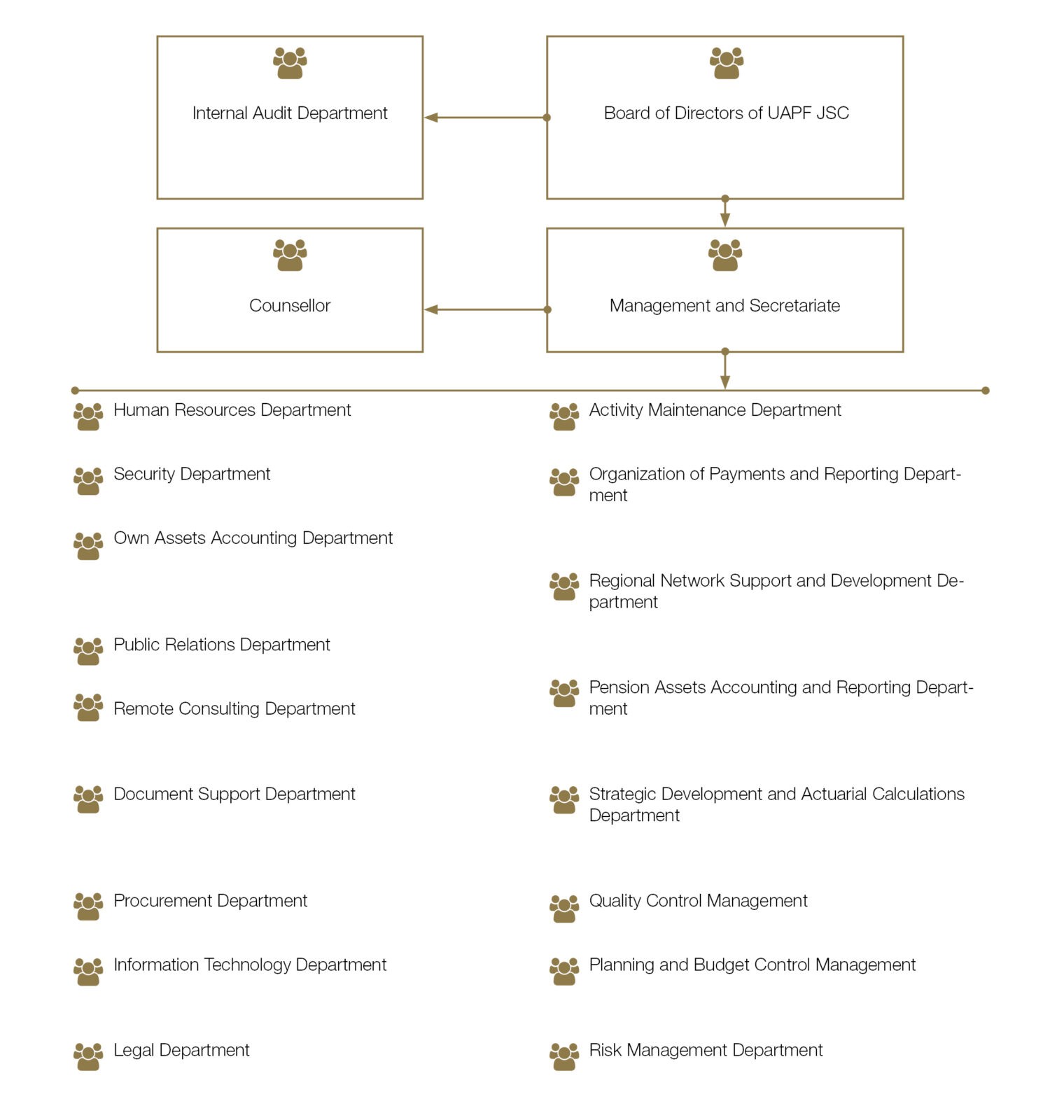
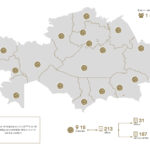
Financial risk management
Financial risk management includes methods for managing market, interest, country and credit risks, as well as liquidity loss risk associated with investing the Fund’s own assets. The pension asset trustee – the National Bank of the Republic of Kazakhstan ensures availability of the risk management system1 for the pension assets portfolio.
In general, UAPF JSC considers the investment quality of the portfolio to be acceptable as evidenced by the situation on such an important indicator as a credit rating. About 71% (taking into account assessments of rating agencies on national and international scales and where, if there are two or more ratings, the highest rating is taken into account)2 the pension assets are placed in financial instruments with a minimum risk level, and ratings from “AAA” to “BBB- ”, and 11.6% with a moderate degree of risk (rating from“ BB+” to “B-”). Starting from 01.04.2017 there is a positive trend in increasing the share of financial instruments with “AAA” to “BBB-” ratings from 64.35% to 71%. As of 01.01.2019, financial instruments worth 1,354.7 bln tenge have adequate credit ratings of issuers, despite the absence of rating assessments of securities.
1 Clause 4.1.8 of the Agreement of government purchase of services relating to trust management of the pension assets of UAPF JSC dated August 26, 2013
2 In accordance with Resolution of the Management Board of the RK NB No.199 “On approval of the Rules for publishing in the mass media by the Unified Accumulative Pension Fund the information concerning the structure of the investment portfolio of the Unified Accumulative Pension Fund at the expense of the pension assets” dated July 26, 2013.
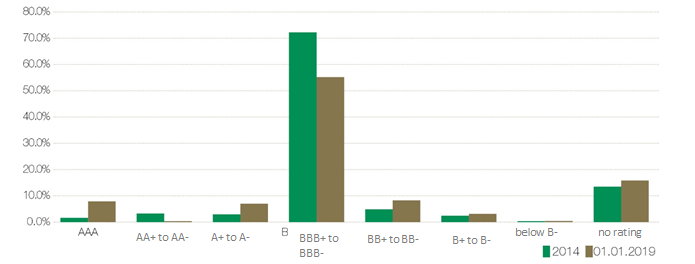
As part of distressed pension assets, as of January 1, 2019, the total debt on 20 distressed issuers is 38,8 bln tenge at nominal value. The total amount of debt repaid to the Fund for the period 2014-2018 amounted to 17,577 mln tenge, including: in 2014-2016 – 1,475.4 mln tenge, in 2017 – 1,248.5 mln tenge, in 2018 – 14,853 mln tenge. Throughout 2018, the Fund continued its active work to return pension assets and confirmed determination of its intentions in this matter.
The UAPF JSC’s pension assets are invested in accordance with the Investment Declaration of UAPF JSC, which is based on the list of permitted financial instruments previously approved by the Council on National Fund Management of the Republic of Kazakhstan and approved by the Government of the RK. As of January 1, 2019, there were no violations of pension asset investment limits have been.
Starting from 2016, the National Bank has been actively working to diversify the UAPF pension asset portfolio, including through a phased increase and maintenance of the currency share of pension assets. Thus, as of 01.01.2019, the share of financial instruments in foreign currency in the Fund’s PA portfolio amounted to 32.77%, while in 2017 this indicator was 27.71%. As part of the new strategic allocation of the foreign currency portion of the pension assets portfolio, on March 12, 2018, a part of the UAPF pension assets worth USD 220.0 mln. held in trust by the National Bank of the Republic of Kazakhstan was transferred to the external manager Aviva Investors under the “Global Emerging Markets Bonds” mandate. In order to improve management efficiency, it is planned to increase the number of external managers within the framework of individual mandates, which is practiced by leading pension funds of the world.
As well as pension assets, the UAPF JSC’s own assets are in trust management of the National Bank of the Republic of Kazakhstan starting from March 28, 2017. At the same time, the National Bank’s investment strategy in relation to the Fund’s own assets is based on the limits and restrictions established by the UAPF JSC’s Own Assets Investment Policy approved by the Board of Directors of the UAPF JSC. The Policy sets out the requirements for issuer ratings, restrictions and limits for allocation into financial instruments of an issuer to ensure minimum risk level investments to preserve the Fund’s Equity. The current investment strategy in terms of own assets is aimed primarily at ensuring safety and reflects a conservative approach towards assets investing. In particular, the strategy provides primarily for placement only in “risk-free” (or with a minimum risk level) financial instruments: government securities of the Republic of Kazakhstan, deposits with the NBRK, bonds of IFOs (international financial institutions); agency bonds (including those issued by national holdings) with a credit at least “sovereign” rating.
Starting from 2018, UAPF JSC, in terms of its own assets, depreciates financial instruments on the basis of the “expected credit loss” model in accordance with the new adopted IFRS 9 standard. In general, the credit risk of the UAPF JSC’s own assets is assessed as “acceptable” since 100% of the own assets portfolio is placed in financial instruments with issuers’ credit ratings of at least “BBB-”. Thus, provisions for own assets are created at a minimum level, i.e., within the “expected credit losses within 12 months”.
Risk management system
The Fund’s risk management system includes a system of processes and procedures that provide Executive Body and Management Body of the Fund with timely information on risks and decisions minimizing them. The key element of the Fund’s risk management process is its integration with specifics of the organization, the basic principles of activity, business processes, engagement of each employee in the risk management process, the sequence and continuity of the Fund’s corporate risk management system (hereinafter — CRMS). Currently, the CRMS consists of four levels of risk management: Board of Directors, Management Board, Risk Management Department (RMD), structural units (risk owners).
Operating risks. UAPF JSC is exposed to operational risks in its activities. Non-financial risks pose serious threats of significant losses and negative damage, including to the goodwill of the Fund. UAPF JSC has developed and applies various operational risk management tools in its activities:
- Collection and analysis of events related to implementation of the operational risks of the Fund is carried out. Risk events are recorded in the Risk Events Register (centralized database, hereinafter referred to as RRE) and are classified according to their causes and nature, which are used to identify the most common problems and vulnerable areas in the Fund’s business processes, systems, divisions and branches and taking measures to minimize operational risks;
- Self-assessment of operational risks is used to identify and evaluate realized or potential operational risks, the level of operational risk management in the structural divisions of the Fund and to assess the effectiveness of subsequent monitoring of identified risks (identifying deficiencies in control systems, assessing the control environment quality) and is carried out directly by structural units. Self-assessment results are reflected in the form of risks and internal control matrix and the Fund’s potential risks map on the basis of which preventive measures are taken to minimize risks;
- Risk map is formed on the basis of RRE data (recorded risk events) and risks and controls (potential risks) matrix and allows to identify risks by assessing the size of the impact and probability, types and levels of risks in the dynamics of changes in the movement of risks and the effectiveness of measures to minimize risks for a certain period of time;
- Threshold levels of key risk indicators signaling the probability of risk and clearly reflecting the real risk for the Fund in various areas are regularly monitored. Key risk indicators allow to pre-identify potential risks and respond to them;
- An Action Plan for minimizing risks, aimed both at eliminating the reasons for implementation of risks and minimizing the consequences in the event of implementation of risk events and potential risks is developed and approved.
Risk management is an integral part of all organizational processes, and therefore, measures to optimize business processes were taken by the way of:
- forming a model of business processes of the first and second levels (in the form of flowcharts) based on the analysis and reengineering of the Fund’s business processes and risks and controls matrix;
- updating management reporting with the exception of duplication based on the results of management reporting flows systematization;
- revising of provisions on managing potential conflicts of interest in order to timely identify and evaluate potential conflicts of interest.
Risk management is not a static process, but a continuous and repeating sequence of interrelated activities affecting various activities of the Fund.
Statement of the Chairman
In 2018, Kazakhstan’s fully-funded pension system celebrated its 20th anniversary. A fully-funded pension system can only be considered as mature 40 years after its inception, when at least one generation has completed a full career cycle of membership in the system, which requires making regular contributions.

